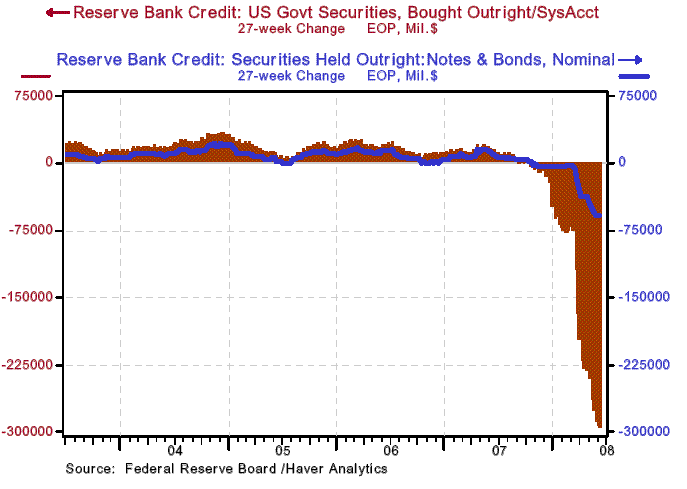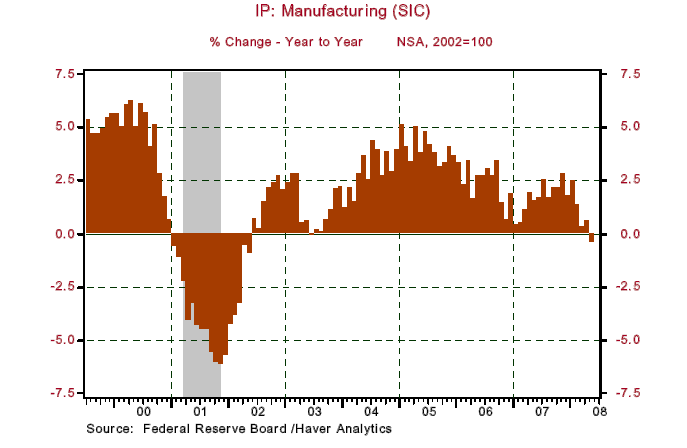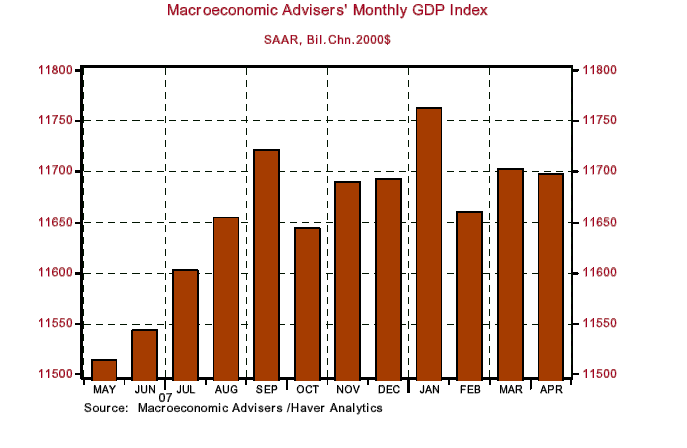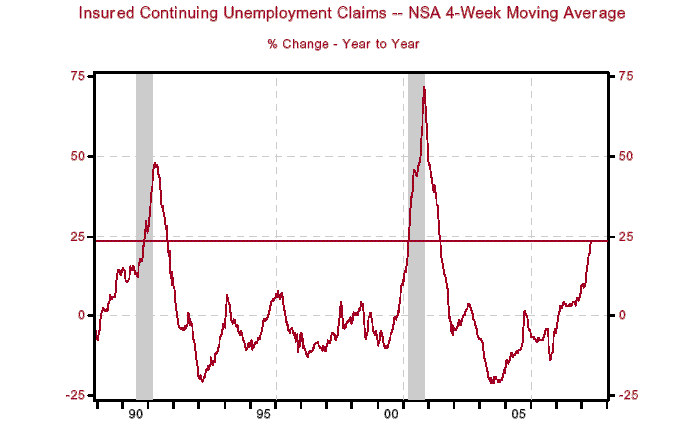US Recession Masked by the Fed Dumping Treasuries to Support Banking System
Economics / US Economy Jun 20, 2008 - 09:07 AM GMTBy: Paul_L_Kasriel

 For the second month in a row, the Conference Board's index of Leading Economic Indicators (LEI) increased by 0.1% in May. And for the second month in a row, the interest spread between the yield on the 10-year Treasury security and the fed funds rate made a large positive contribution to the change in the LEI, 0.14 in April and 0.19 in May. All else the same, had it not been for the positive contributions from the interest spread component, the LEI would have contracted in April and May. Is there any reason to hypothesize that the spread component is biased upwards?
For the second month in a row, the Conference Board's index of Leading Economic Indicators (LEI) increased by 0.1% in May. And for the second month in a row, the interest spread between the yield on the 10-year Treasury security and the fed funds rate made a large positive contribution to the change in the LEI, 0.14 in April and 0.19 in May. All else the same, had it not been for the positive contributions from the interest spread component, the LEI would have contracted in April and May. Is there any reason to hypothesize that the spread component is biased upwards?
Of course, or I would not have mentioned it. Since the Fed has opened up all of its different "facilities" to provide reserves to the financial system and destigmatized borrowing from the discount window, more and more reserves have been injected via these facilities. So as not to lose control of the fed funds rate on the downside, the Fed has had to "sterilize" these massive reserve injections via the facilities by reducing its outright holdings of U.S. Treasury securities. Chart 1 shows that in the 27 weeks ended June 11, the Fed's outright total holdings of U.S. Treasury securities had declined by $297.6 billion , $58.6 billion of which were Treasury notes and bonds. This represents an annualized decrease in the Fed's outright total holdings of U.S. Treasury securities of $573.2 billion and of Treasury notes and bonds of $112.8 billion . Chart 1 also shows that up until 2007, when it opened up these new reserve-injection facilities, the Fed had been a significant net acquirer of U.S. Treasury securities.
Chart 1

The Fed is a price-insensitive buyer/seller of U.S. Treasury securities. But other participants in the U.S. Treasury securities market are more price or interest rate sensitive. It stands to reason that Treasury yields would rise, all else the same, if rate-sensitive participants in the U.S. Treasury securities market had to acquire the holdings of these securities being disgorged by the rate-insensitive participant, the Federal Reserve. Therefore, I argue that at least some of the increase in yield on Treasury 10-year securities in recent months is related to the decline in the Fed's holdings of Treasury securities. If so, then some strength in the LEI in recent months, modest as this strength has been, is related to the Fed's reduced holdings of U.S. Treasury securities.
Another Fed District Weighs in with Weak June Factory Report
On Monday, the Buffalo branch of the New York Fed reported a decline in its Empire State Manufacturing Survey, with the new orders index dropping from minus 0.5 in May to minus 5.5 in June. Today, it was the Philadelphia Fed's turn to rain on the parade of *****-eyed economic optimists. The Philly Fed reported that its new orders index dropped from minus 3.7 in May to minus 12.4 in June. Both of these reports bode poorly for the June national Institute for Supply Management report on manufacturing scheduled for release on July 1.
On Tuesday of this past week, the Federal Reserve Board reported that its index of manufacturing output declined 0.02% in May after contracting 0.87% in April. On a year-over-year basis, the Federal Reserve Board's index of manufacturing output declined 0.02% in May after contracting 0.87% in April. On a year-over-year basis, the Federal Reserve Board's index of manufacturing activity in May fell by 0.43% -- its first year-over-year visit south of the zero border since June 2003 (see Chart 2). Assuming the U.S .economy entered a recession in February, as suggested by Macroeconomic Advisers' monthly GDP index (see Chart 3), this recession has had a relatively modest negative effect on the manufacturing sector. I believe that manufacturing will suffer less in this recession than in the past one because exports should be the relative strong performing sector over the rest of 2008. The sector that will suffer the most in this recession will be the financial sector. Those who keep looking at manufacturing to judge the severity of this recession will be mistaken.
Chart 2

Chart 3

Continuing Unemployment Claims Continue to Suggest Recession
Seasonally adjusting weekly economic data is an ambitious undertaking. With regard to the weekly unemployment claims data, I prefer to look at the behavior of the four-week moving average of the unadjusted data, taking the year-over-year percent change. A picture of this transformation is shown in Chart 4. In the four weeks ended June 6, the average of continuing unemployment claims is up a cycle-high 23.6% from a year ago. This percentage increase is a little low compared to the early months of the 2001 recession but a little higher than it was in the early months of the 1990-91 recession. Rest easy, continuing claims are going significantly higher before this recession is over.
Chart 4

By Paul L. Kasriel
The Northern Trust Company
Economic Research Department - Daily Global Commentary
Copyright © 2007 Paul Kasriel
Paul joined the economic research unit of The Northern Trust Company in 1986 as Vice President and Economist, being named Senior Vice President and Director of Economic Research in 2000. His economic and interest rate forecasts are used both internally and by clients. The accuracy of the Economic Research Department's forecasts has consistently been highly-ranked in the Blue Chip survey of about 50 forecasters over the years. To that point, Paul received the prestigious 2006 Lawrence R. Klein Award for having the most accurate economic forecast among the Blue Chip survey participants for the years 2002 through 2005.
The opinions expressed herein are those of the author and do not necessarily represent the views of The Northern Trust Company. The Northern Trust Company does not warrant the accuracy or completeness of information contained herein, such information is subject to change and is not intended to influence your investment decisions.
Paul L. Kasriel Archive |
© 2005-2022 http://www.MarketOracle.co.uk - The Market Oracle is a FREE Daily Financial Markets Analysis & Forecasting online publication.


